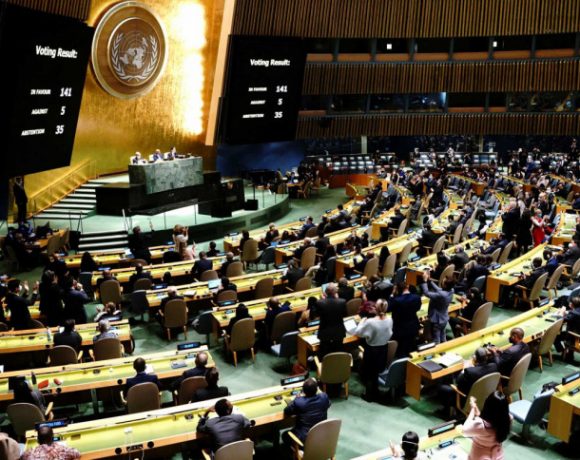The pros and cons of Currency Crises and the Bangladesh Narratives

Dr. JAMALUDDIN AHMED
Currency crises defined as speculative attack on foreign currency value of currency. A speculative attack often found leading to a sharp exchange rate depreciation despite a strong policy response to defend currency value. The exchange rate is often considered to be the most critical price for any economy, for its effects all other prices. The currency policy structures a country economic relation with rest of the world and it is crucial in degerming a development prospect. Specially, the poor countries. Currency politics has attracted lead news of the day in the globe. Exchange rate policy responds to domestic politics for different policies benefit group in the society. The increased global integration of financial market, possibility to speculate against exchange rates of individual currencies and thus, the increased frequency of currency crises, has attracted center point of discussion increasingly. Reinhart et al (2002) described in his own paper ‘Two hundred years of contagion on financial crises with major immediate international repercussion (1800-1930; 1980-2002) and financial crises without immediate international repercussion.
Credit Rating Agency Standard and Poor’s Sovereign Rating History since 1975 reported expected and unexpected crises before and after. We all know 1990 currency crises after the demise of Soviet system, ERM 1992, South American countries, East Asian Currency crises erupted during 1995 onwards. Thus, currency crises and financial crises together with other variables combined with the economic crises. The assessment of leading factors, testing the signals and early warning using appropriate methodology, the policy makers get wakeup calls and understand the gravity of currency crises in economic policies. Taking clear position on the symptoms, early warnings, inconsistent policies, identifying factors those can trigger speculative attacks against currencies, measures to control exchange rate and domestic liquidity, assess the length and negative consequences.
The key question authorities Face the readjustment of exchange rate regime, that is the first institutional victim of successful speculative attack. To get a deeper diagnosis one must analyse deeper diagnosis on a broad set of political and institutional variables such as electoral and government system, federalism, constitutional protection, public finance stability, central bank independence, transparency of public finance and government policy, external constraints coming from international treaties and many others.
The theory and causes of currency crises. There is neither a uniform nor a uniform description of currency crises in the economic literature. Sharp devaluation of currency, speculative attack that was successfully defended meaning authorities did not allow large scale devaluation but implemented preventive measures resulted in the severe and negative effects on the real sector. It seems that currency definition cannot be formulated univocally. Only conditional approach to the issue can guarantee the reliable and useful solution. In principle, currency crises can be identified alternatively as, decline in exchange value of currency, drastic macroeconomic policy adjustment and outflow of foreign exchange reserves.
Economists claims currency crises as the loss of confidence in further stability domestic currency value. Sharp devaluation of the real exchange rate or its departure from the long-term trend can be considered as the beginning of the crises. Various definitions of currency crisis are subject to intensive debate in the economic literature. The most popular definition is a “currency crash” as a nominal depreciation of the currency of at least 25 percent in a year (USD bilateral rate). Calculations of the cost of currency crises loss output relative to trend can be analyzed showing the number of crises, average recovery time, and the cumulative loss of output per crisis with output loss percentage point shows the severity of crises. The need to identify potential causes and symptoms of becoming more apparent. There is clear need to develop a warning system that would help detect sufficiently in advance whether a country may face a crisis. The early warning system should indicate venerability to crisis appear to have worked out best. The other approach directly estimates the probability of currency crisis using limited dependent variable econometric techniques.
The relevance to transition countries, impossible trinity, association with other crises, incidence of currency crises-and measurement issues, frequency of currency crises, predicting currency crises, determinants, statistical methodology, event study approach, signaling approach, profit and other approaches-and assessment of crisis prediction approaches are important issues need to be considered as applicable to the particular country needs. The impact on globalization, capital control, due to currency crises have to be considered. Currency crises affect economic activity, depreciation of domestic currency in successful currency attack may expand the tradable goods sector, and spur growth make exchange rate more competitive. Contractionary depreciation increases repayment cost of external debt particularly in dollars, reversal of FDI can slow down growth. The main stream view had been that any negative effect from a currency depreciation were ultimately offset by a positive effect of stimulus to net exports leading to an overall expansionary effects of depreciation, particularly in developing countries currency crises in combination of banking crises are very costly , by reducing output by 5-8 percent over a 2 to 4 years period. Currency crisis’s accompanied by sudden stops have severe economic consequences-`as the abrupt reversal in foreign credit inflows in conjunction with realignment of exchange rate typically cause a sharp drop in domestic investment, domestic production, and employment. The currency crises can have adverse long-term effects. However, Countries that are more open to trade are likely to experience less dramatic drops in real growth and much quicker rebounds in the aftermath of currency crises. Currency depreciation against USD of 22 countries between Aug 2008-Feb 2009 with 25% + have been presented in this paper.
Currency Crisis Models-Indicator Selection: The early literature described model referred to as the first generation or canonical model of crises. It corresponded to a situation when weak economic fundamentals resulted in a persistent loss of foreign reserves, which did not allow maintaining a fixed exchange rate regime. The model delivered several findings that could be important in predicting currency crises. In the light of assumptions applied to the first generation models the above factors could be considered the potential candidates for early warning indicators. Recently noticed contagion effects have considerably influenced the achievements of currency crises theory. In second generation models of currency crises, best represented by Obstfeld (1986, 1994), policymakers weigh the cost and benefits of defending the currency and are willing to give up an exchange rate target if the costs of doing so exceed the benefits. Third-generation models are harder to characterize simply but generally focus on how distortions in financial markets and banking systems can lead to currency crises. Different third-generation models offer various mechanisms through which these distortions may lead to a currency crisis. Other third-generation models highlight how financial liberalization and government guarantees of private sector liabilities can generate moral hazard and unsustainable fiscal deficits that can lead to crises.
Warning Indicators of Currency Crises: The theoretical models offer the selection of economic and financial indicators helpful in the analyses of vulnerability to crises. Although the theory does not give an unambiguous answer as to what the early warning system of currency crises is, the models provide useful insight as to what economic variables should indicate impending crises. The main leading indicators can be grouped into the broad categories: domestic macroeconomic variables, external variables, public finance, foreign variables, and institutional and structural variables. The following scheme presents how particular leading indicators resulting from theoretical models of currency crises could be classified into the mentioned categories. The next step is to considerably limit this long list of indicators to only those variables, which are perceived as “preferred” in predicting the probability of currency crises. Only selected indicators turn to significantly affect the probability of devaluation and to provide the most accurate signals during the period proceeding the crises. Indicators Statistically Significant, Stylized Facts on the Behavior of Selected Indicators, Average Lead Time, Relevance to Transition Economies, Impossible Trinity, Association with other Crises, Incidence of Currency Crises, Frequency of Currency Crises, Predicting Currency Crises, Determinants of currency crises, Event Study Approach, Signaling Approach, Probit and Other Approaches, Assessment of Crisis Prediction Approaches, Globalization, Capital Controls, and Currency Crises, Effects of Currency Crises, and Currency Depreciation against U.S. Dollar, August 2008–February 2009 Currencies with 25% depreciation or greater.
Leading Indicators of Currency Crises: The turbulence and collapse of the European Exchange Rate Mechanism in 1992-93 and the onset of the Mexican crisis in December 1994 have rekindled interest in both academic and policy circles in the potential causes and the symptoms of currency crises. In particular, there is a question as to whether those symptoms can be detected with sufficient advance so as to allow governments to adopt pre-emptive measures. While accurately forecasting the timing of currency crises is likely to remain an elusive goal for academics and policymakers alike, there is no question about the need to develop and improve upon a warning system that helps monitor whether a country may be slipping into a situation that is bound to end up in a crisis.
This summarizes the main explanations for speculative attacks and balance-of- payments crises that have been presented in the theoretical literature. The aim is to provide some background as to why a variety of indicators have been used in empirical work on crises. Initially, this literature stressed that crises were caused by weak” economic fundamentals,” such as excessively expansionary fiscal and monetary policies, which resulted in a persistent loss of international reserves that ultimately forced the authorities to abandon the parity. More recently, however, some papers have argued that the authorities may decide to abandon the parity for reasons other than a depletion of official international reserves. Instead, they may be concerned about the adverse consequences of policies needed to maintain the parity (such as higher interest rates) on other key economic variables (such as the level of employment). Recent models also have shown that a crisis may develop without a significant change in the fundamentals, these models, economic policies are not predetermined but respond to changes in the economy, and economic agents take this relationship in to account in forming their expectations.
The Traditional Approach-Krugman’s (1979) model shows that, under a fixed exchange rate, domestic credit expansion in excess of money demand growth leads to a gradual but persistent loss of international reserves and, ultimately, to a speculative attack on the currency. This attack immediately depletes reserves and forces the authorities to abandon the parity. The process ends with an attack because economic agents understand that the fixed exchange rate regime ultimately will collapse, and that in the absence of an attack they would suffer a capital loss on their holdings of domestic money. Some of these extensions have shown that speculative attacks would generally be preceded by a real appreciation of the currency and a deterioration of the trade balance.
Recent Models- The traditional approach stresses the role played by declining international reserves in triggering the collapse of a fixed exchange rate, some recent models have suggested that the decision to abandon the parity may stem from the authorities’ concern about the evolution of other key economic variables-suggesting that yet another family of variables could be useful in helping predict currency crises. These models in which the authorities’ objective function depends positively on certain benefits derived from keeping a fixed nominal exchange rate (such as enhanced credibility in their efforts to reduce inflation) and negatively on the deviations of output from a certain target level. Under a fixed exchange rate, increases in foreign interest rates lead to higher domestic interest rates and lower levels of output, making it more costly for the authorities to maintain the parity. Once foreign interest rates exceed some critical level, the cost of keeping the exchange rate fixed surpasses the benefits, and the authorities abandon the parity. More generally, this approach suggests that a variety of factors which may affect the authorities’ objective function could be used as leading indicators of currency crises. An increase in domestic interest rates needed to maintain a fixed exchange rate may result in higher financing costs for the government. To the extent that the authorities are concerned about the fiscal consequences of their exchange rate policy, the decision to abandon the parity may depend on the stock of public debt. Also, higher interest rates may weaken the banking system, and the authorities may prefer to devalue rather than incur the cost of a bailout that could result from an explicit or implicit official guarantee on the banking system liabilities. Therefore, the presence of banking problems (say, as reflected in the relative price of bank stocks, the proportion of non-performing loans, central bank credit to banks, or a large decline in deposits) could also indicate a higher likelihood of a crisis. Leading indicators may also include political variables. The empirical literature on indicators and Currency Crises have been presented. Graciela Kaminsky, Saul Lizondo, Carmen M. Reinhart (Table 1, 1997) provides a summary of 25 selected empirical studies on currency crises. The first column lists the study, the second describes the sample periods and the periodicity of the data, and the third provides information on the countries covered and the type of episode examined. The fourth column lists the economic and political variables that have been used as indicators, and the last column sketches certain features of the methodology used and the principal goal of the study in question. These studies provide information on the numerous and varied experiences with currency crises.
They examine sample periods that run from the early 1950s to the mid 1990s, and cover both industrial and developing countries, although with more emphasis on the latter. About half of the studies use monthly data, with the rest using annual or quarterly data, or data of varied periodicity. Most of the papers examine the experience of various countries and study several crisis episodes; only a few papers focus on a single country. A first group of papers provide only a qualitative discussion of the causes and developments leading to the currency crises. Second group of papers examine the stylized facts of the period leading up to and immediately following the currency crisis. A third group of papers estimate the probability of devaluation one or several periods ahead, usually on the basis of an explicit theoretical model, along the lines pioneered by Blanco and Garber(1986) in their discussion of the Mexican crisis of the early 1980s. A fourth type of methodology is used in Kaminsky and Reinhart(1996).This paper presents a non parametric approach to evaluate the usefulness of several variables in signaling an impending crisis.
The Indicators: Graciela Kaminsky, Saul Lizondo, Carmen M. Reinhart (Table 2, 1997) presents a list of the 103 indicators used, grouped into six broad categories and some sub-categories,” including: (1)the external sector; (2) the financial sector; (3) the real sector; (4) the public finances; (5) institutional and structural variables; and (6) political variables. The indicators of the external sector were, in turn, classified into those related to the capital account, the external debt profile, the current account, and international (or foreign) variables. The indicators of the financial sector were split into those that could be associated with financial liberalization, and other indicators. Other financial variables: central bank credit to the banking system, the gap between money demand and supply, money growth, bond yields, domestic inflation, the “shadow “exchange rate, the parallel market exchange rate premium, the central exchange rate parity, the position of the exchange rate within the official band, and M2/international reserves. Real sector: real GDP growth, the output gap, employment/unemployment, ages, and changes in stock prices. Fiscal variables: the fiscal deficit, government consumption and credit to the public sector. Institutional/structural factors: openness, trade concentration, and dummies for multiple exchange rates, exchange controls, duration of the fixed exchange rate periods, financial liberalization, banking crises, past foreign exchange market crises, and past foreign exchange market events.” Political variables: dummies for elections, incumbent electoral victory or loss, change of government legal executive transfer, illegal executive transfer, left-wing government, and new finance minister; also, degree of political instability(qualitative variable based on judgement).
The choice of indicators was dictated by theoretical considerations and by the availability of information on a monthly basis. They include: (1) international reserves (in U.S. dollars); (2) imports (in U.S. dollars); (3) exports (in U.S. dollars); (4) the terms of trade (defined as the unit value of exports over the unit value of imports); (5) deviations of the real exchange rate from trend (in percentage terms); (6) the differential between foreign (U.S. or German) and domestic real interest rates on deposits (monthly rates, deflated using consumer prices and measured in percentage points); (7) “excess” real Ml balances;24 (8) the money multiplier (of M2); (9) the ratio of domestic credit to GDP; (10) the real interest rate on deposits (monthly rates, deflated using consumer prices and measured in percentage points); (11) the ratio of (nominal) lending to deposit interest rates; 25 (12) the stock of commercial banks deposits (in nominal terms); (13) the ratio of broad money (converted into foreign currency) to gross international reserves; (14) an index of output; and (15) an index of equity prices (measured in U.S. dollars). For all these variables (with the exception of the deviation of the real exchange rate from trend, the “excess” of real MI balances, and the three variables based on interest rates), the indicator on a given month was defined as the percentage change in the level of the variable with respect to its level a year earlier. Filtering the data by using the 12-month percentage change ensures that the units are comparable across countries and that the transformed variables are stationary, with well-defined moments, and free from seasonal effects. These studies reviewed in this paper indicate that an effective warning system for currency crises should take into account a broad variety of indicators, as these crises are usually preceded by symptoms that arise in a number of areas. Indicators that have proven to be particularly useful in anticipating crises include the behavior of international reserves, the real exchange rate, domestic credit, credit to the public sector, and domestic inflation. Other indicators that have found support include the trade balance, export performance, money growth, real GDP growth, and the fiscal deficit.
The “Signals” Approach describes the “signals” as well as some of the empirical results obtained by using this approach. It summarizes the discussion in Kaminsky and Reinhart (1996), who examine 76 currency crises from a sample of 15 developing and 5 industrial countries during 1970-1995. It also expands the analysis presented in that paper by ranking the indicators by three alternative metrics which include: calculating the probability of a crisis conditional on a signal from that indicator; the average number of months prior to the crisis in which the first signal is issued; and the persistence of signals ahead of crises.
Currency Crises in Emerging-Market Economies-Causes, Consequences: Older history registers many episodes of government defaults and bank runs. However, currency crashes–one of the forms of financial instability–were not so frequent until the middle of the last century. The reason for this was very simple. The world monetary system was dominated by a number of strong currencies based on the gold standard and their satellites (currency boards in colonies) and consequently only the extreme events such as the World War I and Great Depression could temporarily damage this system. The new crisis episodes stimulated both theoretical discussion and a large body of empirical analyzes trying to identify the causes of currency crises and their rapid propagation, their economic and social consequences, methods of their preventing and effective management after a crisis had happened. The existing terminology related to currency crises is not precise and can create certain confusion. Banking crisis refers to the actual or potential bank runs or failures that induce banks to suspend the internal convertibility of their liabilities or which compels the monetary authorities to intervene to prevent this by extending assistance on a large scale. The public debt crisis is a situation in which a government cannot service its foreign and/or domestic obligations. The balance of payment crisis is a structural misbalance between a deficit in a current account (absorption) and capital and financial account that after exhausting international reserves leads to a currency crisis. The typology of financial crises comprises of banking crisis, public debt crisis, balance of payment crisis leads to currency crisis (Antczak (2000). A currency crisis can be understood as a sudden decline in the confidence to an individual currency usually leading to a speculative attack against it. Frankel and Rose (1996) propose one such criterion, defining a “currency crash” as a nominal depreciation of a currency of at least 25 percent in a year, provided that this represents a 10 percentage points increase in the rate of depreciation from the previous year. Severity of the currency crises measured by reserve losses and nominal depreciation of the domestic currency analyzed 14 historical episodes by Jakubiak (2000) in terms crisis date, loss of reserves, and nominal depreciation against USD of crisis hit countries.
Theoretical Models of Currency Crises, First-generation Models, Modified First-generation Models, Second-generation Models and third-generation Models, Early Warning Signals, Step towards developing an effective Early-Warning-System, Early warnings indicator (statistically significant), Behavior of selected warning indicators (stylized facts) are explained. The Causes of Currency Crises, Fiscal Imbalances, Causes of Currency Crises, Fiscal Imbalances, Results of Empirical Research have been detailed. The currency overvaluation and Measure a Real Exchange Rate Overvaluation, the role of exchange rate regimes are analyzed from the context of currency crisis. The structural weaknesses of the banking and corporate sectors, relationship between banking and currency crises, the most frequent weaknesses of the banking sector in relation to currency crisis are explained. A review of empirical research on analyzing the panel of 21 industrial, 37 developing and 32 emerging-market countries over the period of 1975–1997 [“Emerging markets” were defined as countries with relatively open capital markets while “developing country” sample included other developing and transition economies]. Glick and Hutchison (2000) find that out of these 90 countries 72 had banking crises and 79 experienced at least one currency crisis. There were 90 banking crisis episodes and 202 currency crisis episodes. Out of 90 banking crises 37, i.e. 41% of the total have been twin-crises [“Twin” crises were defined as banking crises accompanied by a currency crisis in the previous, same, or following year]. The frequency of banking crises increased four times between the decade of 1970s and 1990s while the frequency of currency crises remained more or less the same. The occurrence of twin crises rose as well. All types of crises, in particular the twin crises, were more frequent in the financially liberalized emerging markets. The same authors also provide empirical evidence on the interrelation between currency and banking crises.
The frequency of banking crises accompanied by currency crises is higher than the frequency of currency crises accompanied by banking crises. Currency crises tend to cluster one year after a banking crisis while banking crises accompanied a currency crisis usually in the previous year. Both findings support the view that banking crises provoke currency crises rather than the opposite.
Political Instability: The role of a political factor in provoking currency crises seems to be obvious but certainly needs in a more concrete specification. The notion of political instability/fragility may involve a broad range of situations. On the one extreme, these can be such dramatic events as external or domestic military conflicts. Some countries suffer chronic constitutional problems like conflict between executive and legislative branches of governments (very frequent in CIS and Latin American countries) or between federal (central) and regional governments (examples of Russia, Brazil and Argentina). Many developing and transition countries do not have a well-established configuration of political parties what creates difficulties in forming stable and predictable governments. Finally, even in the most stable democracies there are episodes of minority governments, unstable government coalitions, irresponsible behavior of individual politicians or political parties, and uncertainty related to forthcoming election results. On the other hand, even the very stable authoritarian regime can be challenged by democratic aspirations of societies. Political instability creates uncertainty among money holders what, in turn, increases the risk margin associated with a specific currency or debt instrument. This may trigger the sudden capital outflow, stop capital inflow or push money holders towards currency substitution.
Political instability decreases chances of correcting unsustainable policies inconsistent with a currency peg and, therefore, accelerates the moment of a speculative attack (under the first- and third-generation crisis models). It also increases probability of inconsistent policy goals what may trigger a speculative attack according to the second-generation crisis models.
Finally, political instability complicates crisis management, deepening its scale and negative consequences. In some cases political instability can be endogenous vis-a-vis a crisis. When crisis starts it usually undermines legitimacy of a government that often results in political destabilization, which in turn makes any bold anti-crisis steps very difficult.
Crisis Management–How to defend an exchange rate if at all. After a currency crisis’ outburst its further dynamics depends very much on government ability to take the required corrective measures, introduce a consistent policy package, act consequently and quickly enough, influence financial markets developments and calm market panics. Political factors mentioned above play an important role here. Also support of the international financial institutions (notably the IMF) may help a government in regaining influence on financial markets and help to convince market participant to resist temptation to withdraw their capital. Contagion Effect. The new feature brought by currency crises in the decade of 1990s is their fast propagation from one country to another. This happened after the collapse of British pound in November 1992, after the Mexican crisis in December 1994 (the so-called Tequila effect), after the Thai crisis in July 1997 (sometimes called the “Asian flue”) and again after the Russian crisis in August 1998. A large body of both theoretical and empirical literature started to analyze what was referred to as a “contagion” effect.
Economic and Social Consequences of Currency Crises. In the public discussion about currency crises and other kinds of financial turbulence the majority of opinions point at crises’ severe costs (Stiglitz, 1998). According to this dominant view, crises are unfavorable incidents and should be avoided using all possible means. On the other hand, one can expect that crises, punishing evident cases of economic mismanagement, could have disciplining effect on governments (and indirectly on their electorate), push necessary reforms (Rodrik, 1996), and may automatically correct imbalances created by politicians. Additionally, crises brought the experience to the international financial organizations (Kohler, 2001). The comparison with a mechanism of bankruptcy on the micro-level seems to be a good parallel here. Among the countries analyzed, Bulgaria seems to be the best case of such a positive self-correcting mechanism, involving a change of government, comprehensive package of economic reforms and introducing a currency board just after the 1996–1997 crisis (Ganev, 2001). Other such positive examples involve Mexico (Paczyñski, 2001) and Thailand (Antczak M., 2001).
The Role of International Liquidity in Preventing Currency Crises. Many economists (Feldstein, 1999; Mishkin, 1999; Radelet and Sachs, 1998) call for higher foreign exchange reserves holdings as a measure helping to prevent currency crises. At first glance, this proposal seems to make sense: even with less-than perfect economic policy, country could survive any speculative attack, provided that its central bank has enough foreign exchange reserves. What is more, if the reserves are high enough, the attack (bound to fail) will never happen, according to first-and second-generation cri- sis models. In addition, numerous empirical studies suggest that insufficient international liquidity was a good predictor of the recent crises (Radelet and Sachs, 1998, Tornell, 1999, Bussière and Mulder, 1999).
The Role of the IMF in Preventing Currency Crises. As the basic statutory mission of the International Monetary Fund (IMF) is to deal with balance-of-payments disproportions it is reasonable to ask what has been the role of this organization in preventing currency crises of the last decade (or resolving them when already happened). This question is particularly important as many well-known economists question effectiveness of the IMF in the recent crisis episodes. Meltzer (1998) critique of the IMF and US Treasury role before and during the Mexican crisis, and Radelet and Sachs (1998) critique on the IMF role in Thailand and Indonesia are just two examples of a large body of such opinions. The Chronology of IMF Intervention in Asian Currency Crisis.
Causes and sources of Asian Financial Crises: It is also notable that financial crises in emerging markets have occurred under varying macroeconomic conditions. They have occurred when current-account deficits were large and unsustainable (Mexico and Thailand), but also when such deficits were relatively small (Indonesia and the Russian Federation). Although significant overvaluation has often been characteristic of countries experiencing currency turmoil (Brazil, Mexico and the Russian Federation, all of which used the exchange rate as a nominal anchor to bring down inflation), this has not always been the case; in most East Asian countries the appreciation of the currency was moderate or negligible. Similarly, while in some cases crises were associated with large budget deficits (Brazil and the Russian Federation), in others the budget was balanced or in surplus (Mexico and East Asia). Finally, crises occurred when external debt was owed primarily by the public sector (Brazil and the Russian Federation) or primarily by the private sector (East Asia).
Of these various episodes, the Asian crisis was generally more difficult to predict than the Mexican, Russian or Brazilian crises. This is in part because these economies had been held up as examples of prudent and sustainable economic policies, and in part because of the orthodox faith in then fallibility of markets and the undisputable benefits of free capital movements. However, there were exceptions. The BIS Report 1996 warned about the exposure in East Asia. Similarly, the 1996 TDR sounded a clear warning on South-East Asia, noting that growth in the region relied excessively on foreign resources, and that these economies could suffer from loss of competitiveness and were highly vulnerable to interruptions of capital inflows. Like elsewhere, the crisis in East Asia broke out with a sudden loss of confidence and massive withdrawal of capital by both domestic and foreign investors as well as unhedged debtors. The course of events is well known and needs no repetition here. What we propose to do instead is to analyse the crisis by distinguishing between the build-up of external vulnerability and the factors that triggered the loss of confidence and exit. In both respects, external as well as internal factors, including domestic policies, appear to have played a crucial role. The build-up of external vulnerability, why did the lenders lend, why did the borrowers borrow, why did the borrowers borrow, policy errors, institutional weaknesses, the outbreak of the crisis and contagion have been analyzed.
Asian Financial Crisis of 1997-1998 Revisited: Causes, Recovery, and the Path Going Forward: The assignment conducted on the 1997-1998 Asian financial crisis, which adversely affected a considerable number of Asian, Latin, and European economies aiming to do the following: (1) identifying the major causes of this financial crisis; (2) examining the recovery of the affected economies by the early 2000s; and (3) determining the ways in which future financial crises could be prevented. Subsequent to the main sections of the paper, concluding remarks will be made. The 1997-1998 Asian financial crisis is considered the third international financial crisis in modern history (Garg, et al., 1999). According to Ardiansyah (2002), the first sign of the financial crisis was the declaration made by the Thai real estate developer Somprasong Land on February 5, 1997, that it had defaulted on a $3.1 million interest payment for a $80 billion Euro-convertible bond. This was followed by the bankruptcy of Finance One, Thailand’s largest financial institution. As a result of these two startling events, Thailand’s currency, the Baht, became unstable and depreciated significantly against the U.S. dollar. The decline of the Thai currency caused the financial crisis to spread to Indonesia, Malaysia, and the Philippines, and subsequently to South Korea, Hong Kong, and China. During the financial crisis of 1997- 1998, the impacted countries experienced a substantial loss of the value of their currencies, as well as the value of their domestic stock markets (Ardiansyah, 2002). The crisis, also, resulted in lower demands for imported goods, lower rates of export, less government and private spending, higher poverty rates, reduced production, massive layoffs, and hence increased unemployment. Pang (2000) summarizes the Asian financial crisis in a series of events: (1) the collapse of the regional economies mainly as a result of dysfunctional, overvalued currencies, which were themselves caused by high rates of inflowing foreign direct investment (FDI) and foreign portfolio investment (FPI); (2) the sudden and swift liberalization of the regional capital markets to entice more FDI and FPI; (3) heavy corporate and private debt in Dollar and Yen; (4) the public backlash to the excessive crony capitalism present in the region; (5) the insufficiency of the remedial tools and state policies utilized in the region; (6) the rise and global contagion of investor panic; and (7) the governments’ fake promises of bailout to local corporations. The Asian financial crisis, according to Davidson (2005), came as an economic crash with the end of what he calls the “Asian miracle,” which is the remarkable performance of East Asian economies in the previous two decades. The Asian financial crisis caused by a combination of equally important factors, and cannot be adequately explained by a single, unequivocal cause. In this section of the assignment paper, the major causes of the financial crisis will be identified and thoroughly evaluated. Crony Capitalism: The financial crisis could be partly attributed to the failure of the Asian economic model, which fundamentally deviated from the basic principles of free market capitalism (Lee, 1998). Almost all of the countries that were affected by the crisis pursued a version of the economic system often referred to as “crony capitalism.” Enderwick (2005) defines crony capitalism as “a form of capitalism that restricts the allocation of economic resources and opportunity to a country’s privileged elite or politically connected ‘cronies.’”
This economic system is closely associated with corruption and rent-seeking practices, which result in lower incentives for wealth creation and a misallocation of resources (Aligica & Tarko, 2014). The ubiquity of cronyism in the East Asian economic systems significantly contributed to the emergence of the 1997-1998 Asian financial crisis. Fixed Exchange Rates Fixed exchange rates–also referred to Another factor that led to the Asian financial crisis is the phenomenon of “moral hazard,” which refers to governments’ and the international community’s artificial guarantees of financial stability, with implicit promises of bailout to corporations at times of economic crisis (Pang, 2000). as pegged exchange rates–could be identified as another cause of the Asian financial crisis. This resulted in a misallocation of investments, declining returns on investment, and ever-more fragile financial systems (Lee, 1998). The contagion of the financial panic initiated by the depreciation of the Thai Baht, also, played a role in the occurrence of the Asian financial crisis (Baig & Goldfajn, 1999). Upon the eruption of Thailand’s local financial crisis, the majority of international short-term creditors withdrew their loans from the entire East Asian region, assuming the homogeneity of the East Asian economies (Radelet & Sachs, 1998). As a result, a severe foreign exchange and stock market turmoil spread in East Asia, with significant consequences for the economies of Thailand’s neighboring countries, namely Indonesia, Malaysia, the Philippines, and Korea (Baig & Goldfajn, 1999). Thus the Asian financial crisis was partly caused by the contagion of financial panic in the international investment community.
Jamaluddin Ahmed FCA PhD is the Chairman of Emerging Credit Rating Limited and Tier 1 Solutions Limited, ex-President of ICAB, ex-member of the Board of Directors of Bangladesh Bank, ex-Chairman of Janata Bank Limited, and ex-General Secretary of Bangladesh Economic Association. Email: jamal@emergingrating.com


















